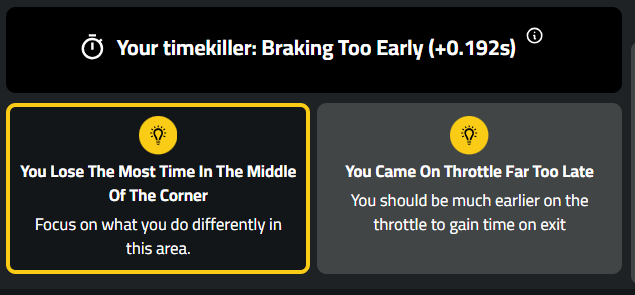Understanding and Setting Up Camber in Sim Racing
Sim racing has become an increasingly popular way for motorsport enthusiasts to experience the thrill of racing from the comfort of their homes. While many aspects of sim racing replicate real-world driving, understanding and setting up camber is a crucial element for achieving optimal performance in the virtual world.
In this article, we will explore the concept of camber in sim racing, its impact on handling, and how to set it up effectively to enhance your racing experience.
What Is Camber in Sim Racing?
Camber, in the context of sim racing, refers to the angle at which a vehicle's wheels are tilted relative to the vertical axis when viewed from the front or rear of the car. Like real-world racing, camber in sim racing plays a vital role in tire performance, handling, and overall racing dynamics. It affects how the tires make contact with the track surface and influences grip and handling characteristics.
The Impact of Camber on Handling
Understanding the impact of camber is essential for achieving the desired handling characteristics in sim racing:
Cornering Grip: Camber adjustments influence the tire's contact patch with the track surface during cornering. Negative camber (top of the wheel tilting inward) can improve cornering grip by ensuring more even contact across the tire's tread. This helps maintain better traction during turns and enhances cornering performance.
Straight-Line Stability: While negative camber enhances cornering grip, excessive negative camber can lead to reduced straight-line stability. This is because the tire's contact patch on the inner edge is reduced, potentially causing the car to feel twitchy on straights.
Tire Wear: Proper camber settings are crucial for even tire wear. Excessive negative camber can cause accelerated wear on the inner edges of the tires, while too much positive camber (top of the wheel tilting outward) can result in excessive wear on the outer edges.
Setting Up Camber in Sim Racing
Setting up camber in sim racing involves finding the right balance between cornering performance, straight-line stability, and tire wear. Here are steps to help you set up camber effectively:
- Understand Your Vehicle: Different cars and simulations may have varying suspension characteristics and tire models. Familiarise yourself with your chosen vehicle's suspension setup and tire behaviour to make informed camber adjustments.
- Consult Reference Material: Online forums, user guides, and community resources specific to your sim racing platform can provide valuable insights into recommended camber settings for different cars and tracks.
- Start with Baseline Settings: Most sim racing titles provide baseline setups for each vehicle. Start with these settings as a reference point before making adjustments. These baselines are often balanced for general handling characteristics.
- Consider Track Conditions: Camber settings can vary depending on the track's layout and surface. For tracks with many tight corners, you may lean towards more negative camber to enhance cornering grip. On tracks with long straights, you might opt for a more neutral camber setup for straight-line speed.
- Gradual Adjustments: Make small, incremental changes to your camber settings. Monitor how each adjustment affects your car's handling and lap times. This gradual approach allows you to find the optimal setup for each specific scenario.
- Tire Temperature: Monitor tire temperature during practice sessions. Ideally, you want even tire temperature across the entire tire surface, indicating consistent contact with the track. Adjust camber settings if you notice uneven temperature distribution.
- Balance and Experiment: Achieving the perfect camber setup often requires balancing multiple factors, including tire wear, cornering grip, and straight-line stability. Don't be afraid to experiment and fine-tune your settings based on your driving style and preferences.
Camber is a fundamental element of sim racing that can significantly impact your performance on tracks. Understanding its effects on cornering grip, straight-line stability, and tire wear is crucial for optimising your racing experience. By carefully setting up camber, making gradual adjustments, and considering various factors, you can fine-tune your vehicle's handling characteristics to match the demands of different tracks and improve your overall sim racing performance. Whether you're chasing fast lap times or seeking a more realistic racing experience, mastering camber adjustments is a valuable skill for any sim racer.


.png)























